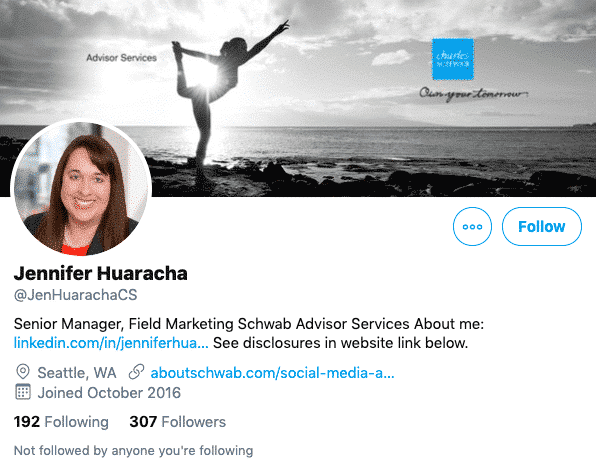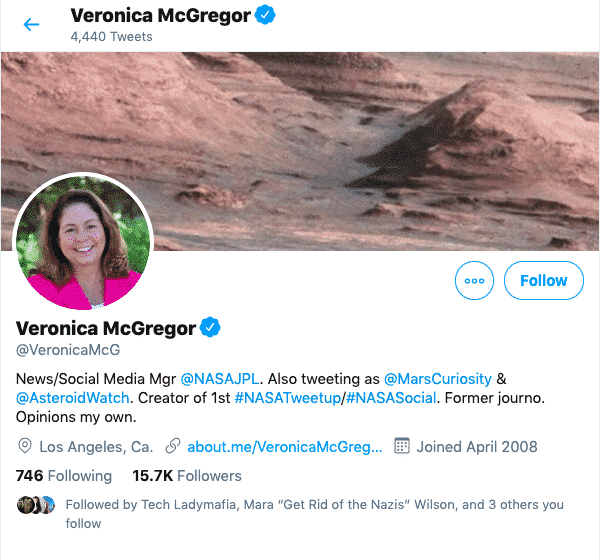How to Create Effective Social Media Guidelines for Your Business
Every business should have social media guidelines. That’s true even if your company is not on social media (psst: here’s how to get started).
Reason number one? Your employees are on social media. And the things they say and do can have a positive or negative effect on your brand.
Social media guidelines lay down some rules. In some cases, these rules are required by law or for legal protection. But they shouldn’t be used to police the people that work for you.
Done right, guidelines can empower employees with the information they need to make the right choices on social media—for themselves and the company. They can even turn team members into invaluable ambassadors for your brand.
Learn the difference between a social media policy and social media guidelines and check out some examples from other brands.
Bonus: Get the step-by-step social media strategy guide with pro tips on how to grow your social media presence.
The difference between a social media policy and social media guidelines
While often used interchangeably, a social media policy and social media guidelines are not quite the same thing.
A social media policy is a comprehensive document that describes in detail how the company and its employees use social media. These policies are meant to protect a brand from legal risk, and maintain its reputation on social media.
Where a social media policy lays out the rules and repercussions for breaking them, social media guidelines are more instructive. Think of them as an employee manual for social media best practices. These guidelines should outline how to behave on social media in a way that’s positive and healthy for the company, employees, and customers. It may include etiquette tips, helpful tools, and links to important resources.
Social media guidelines should also not be confused with a social media style guide. A style guide includes guidelines on brand voice, visuals, and other elements. It is often used by the content creators in an organization to ensure that their posts are “on brand”.
Social media guidelines are also different from community guidelines, which set the rules for public engagement with your account or group. To combat online abuse, the Royal Family shared its own community guidelines last year.
Want to learn more? Take Hootsuite Academy’s free course Implementing Social Media Governance within your Organization.
Why you need social media guidelines for your business
Social media can be intimidating—especially when it comes to social media policy legalese. But you don’t want to discourage employees from using social media altogether.
Remember, every employee is a potential brand ambassador. Social media guidelines should provide them with the tools they need to engage positively, respectfully, and inclusively.
With social media guidelines, you can:
- Encourage employees to follow your official accounts
- Share your company’s social media strategy
- Empower your employees to engage positively
- Educate on social media best practices
- Introduce employees to approved third-party tools and resources, such as Hootsuite’s social suite or Hootsuite Academy training
- Protect your employees from social harassment
- Safeguard your company from cybersecurity risks
- Boost your brand’s reputation on social media
Social media guidelines are typically created for employees, but they can also be shared with influencers, corporate partners, creative agencies, and others who can benefit from them.
What to include in your social media guidelines
There are some staples that should be in all social media guidelines. But every company is different. So be sure to tailor yours to fit your industry and employee needs.
Before getting started, it may be a good idea to reach out to employees. See if there are any common questions or misconceptions that you can address.
Here’s a rundown of core sections you should include in your social media guidelines.
Official accounts
Share the links to your company’s social media channels, and encourage employees to follow. This is a great opportunity to show employees how your brand presents itself on social media. If specific hashtags are a core part of your social strategy, be sure to share them, too.
Some companies allow or sometimes require representatives to run personal social accounts on behalf of the brand. If that’s the case, share how someone can (or cannot) obtain authorization to do the same.


Disclosure and transparency
It’s required by law that someone identifies themselves as an employee when they discuss company-related matters on social media. In the United States, the Federal Trade Commission requires the identification to occur in the relevant post. Just having it in your bio is not enough.
As someone who works for nasa, it’s actually really nice seeing people wearing nasa gear. So keep wearing it ????
— Garrett (@OnSomeGovtList) January 16, 2019
On the other hand, there are cases when someone has identified themselves as an employee in their social bio, but plans to express their own opinions, politics, etc. In these cases, you may wish to ask that employees add a disclosure that states “All opinions expressed are my own.” Or something to that effect.

Here’s everything you need to know to stay compliant on social media.
Privacy
Remind the people who work for you to avoid sharing confidential information. This includes private information about coworkers, private communications, financial disclosures, research and development news, upcoming products, or any other sensitive information.
Cyber safety
It’s a good idea to go over cyber safety basics, especially since cyber hacks and threats are not uncommon. If you collect information about your customers, it’s paramount that you and your employees protect those details.
Some cyber safety tips you should cover are:
- Limit the personal and professional information you share
- Choose strong passwords
- Use a different password for every social account
- Don’t use the same passwords for your corporate accounts
- Use two-factor (or multi-factor) authentication to login to social networks
- Use personal credentials for personal social media accounts
- Only activate geolocation services on apps when necessary
- Practice safe browsing
- Make sure your Internet connection is secure
- Do not download or click on suspicious content
Harassment
Most guidelines remind staff to be kind on social media. It’s important to promote positivity. But businesses should also make clear that they do not tolerate any form of social media harassment.
It’s also important to provide protocol or resources for employees who experience harassment. That’s especially true if your company encourages social media use. Define your policy for dealing with trolls or bullies—whether it’s to report them, ignore them, or block or ban them.
Tell people how to report issues they may have seen or experienced. If support is needed, tell employees how and where they can get it.
Inclusivity
It’s important for every employer and brand to promote inclusivity on and off social media. Showing your employees that you care about inclusivity on social media shows them that you care about them, too.
Inclusivity guidelines may include:
- Use inclusive pronouns (they/them/theirs/folks)
- Don’t make assumptions about gender, race, experience, or ability
- Avoid gender or race-specific emojis
- Feel free to share your preferred pronouns
- Use title case for hashtags—it makes them more legible for screen readers
- Provide descriptive captions for images
- Be thoughtful about representation
Find more inclusivity resources here.
Legal Considerations
Remind employees to respect intellectual property, copyright, trademarks, and other relevant laws. A good rule of thumb is: If it’s not yours, and you don’t have permission, don’t post it.
Bonus: Get the step-by-step social media strategy guide with pro tips on how to grow your social media presence.
Get the free guide right now!Do’s and don’ts
Do’s and don’ts spell things out super clearly. Some things may seem obvious, but they may not be obvious to everyone.
Here are a few do’s and don’ts you may want to include:
- DO list the company as your employer in your social media bio (if you wish to)
- DON’T engage with competitors in an inappropriate way
- DO share company posts, events, and stories
- DON’T engage with negative coverage or comments
- DO express your own opinion. Just make sure it’s clear you’re not speaking on behalf of the company
- DON’T comment on legal matters pertaining to the company
- DO report harassment you’ve experienced or noticed
As an alternative or add-on, consider including a frequently asked questions section—especially if you are frequently fielding certain queries. If you haven’t received questions, solicit them from your employees.
Helpful resources
Include links to useful resources throughout the guidelines or in a separate section. Make sure to reference your social media policy, social media style guide, and community guidelines.
You may also wish to add links to company documents, such as your corporate code of conduct, employee agreements, privacy policies, etc. Marketing, advertising and sales regulations from the Government of Canada and the FTC can be linked here, too.
If your company offers social media resources, make everyone aware of them. Whether its tools or training from Hootsuite, or stipends for social media classes, empower the people that work for you however you can.
For example, Hootsuite Amplify is a great way to find vetted content to share and enhance your personal or corporate brand.
Contact Information
Be sure to also add information on who or where to questions can be sent. That may be a specific person, a forum or slack channel, or an email address.
Date
Indicate when your guidelines were most recently updated.
Social media guidelines examples
Looking for real world examples of social media guidelines? We’ve assembled some of the best —from PowerPoint presentations to video explainers.
Nordstrom
Nordstrom’s Social Media Employee guidelines are straightforward and comprehensive. Notably, they ask employees to ensure their posts “do not create a real or perceived conflict of interest.” It also directs readers to its companion Conflict of Interest and Improper Gifts and Payments guidelines.
Orange
In addition to laying out employee expectations, Orange’s social media guidelines show its employees how they can take advantage of social media. With pointers like “observe trends,” “listen to feedback,” and “attend online conferences” it empowers employees to use social as a tool to boost their industry expertise.
Xerox
Xerox’s social media guidelines come in the form of a video explainer. In the video, Xerox offers seven tips for employees, with easy-to-follow examples and animations.
Best Buy
Best Buy’s guidelines come with the subtitle: “Be smart. Be respectful. Be human.” Because they’re posted on a message forum, it’s easy to see when they were last updated, and the author of the update. It concludes with a list of relevant policies and contact information.
The New York Times
With the aim of transparency, The New York Times published an internal memo on its social media guidelines for journalists. Publishers may have a higher standard to uphold than most businesses when it comes to preserving objectivity, many guidelines may still apply.
Intel
Intel’s social media guidelines offer three rules of engagement: disclose your relationship to Intel, protect the brand, and use common sense. In addition to defining these rules, the company also breaks down specific guidelines for social media practitioners and for sponsored content.
Government of British Columbia
Social media guidelines for BC public service employees are available in a variety of formats, making them more accessible. In addition to interactive online guidelines and a PDF version, there’s a section for Frequently Asked Questions, and PowerPoint slides that can be used for training purposes.
Stanford University
Stanford University’s guidelines make a distinction between people posting on behalf of the university and personal accounts. It also provides rules for departmental use of social media on behalf of the university. This may be a good model for large companies with multiple departments, accounts, and team members.
FedEx
FedEx offers 10 social media guidelines to its employees in this four-page PDF. Frequently asked questions and answers are placed with the relevant rule, which helps to address uncertainties as soon as they arise. Snippets on social media use during work time and computer resources make related policies easily digestible.
ESPN
ESPN released a new policy in 2017 after several public controversies—including one that led to the suspension of one of its broadcasters. The new guidelines encourage employees to “think before you tweet” and even consult other employees before hitting publish. Beyond general rules, it also has a separate section for political and social issues.
IBM
True to brand, IBM calls its guide “Social Computing Guidelines.” It covers social networks (i.e. Facebook, LinkedIn), media sharing networks (i.e. Instagram, Snapchat), communications platforms (i.e. WhatsApp, Messenger), microblogging networks (i.e. Twitter, Tumblr), discussion forums (Reddit, Quora), enterprise tools, and more.
PlayStation Practitioner Guidelines
Your social media guidelines can apply to influencers as well as employees. But if you often work with “practitioners,” or partners, it may be worthwhile to create separate guidelines, as PlayStation has done. PlayStation includes specific requests, like to tag the company on social and include specific hashtags in posts.
Hootsuite makes it easy to protect your brand across all social channels. From a single dashboard you can easily manage permissions, approve posts, edit messages, take advantage of compliance and security tools, and more.
The post How to Create Effective Social Media Guidelines for Your Business appeared first on Hootsuite Social Media Management.
Contributer : Hootsuite Social Media Management https://ift.tt/2bG5Cdl
 Reviewed by mimisabreena
on
Tuesday, February 04, 2020
Rating:
Reviewed by mimisabreena
on
Tuesday, February 04, 2020
Rating:














No comments:
Post a Comment